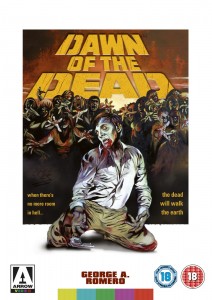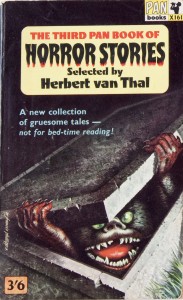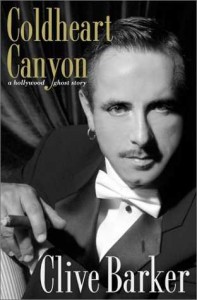Last weekend, after a jar or three in the pub, we decided to watch a late movie at home. So I started sorting through the stack of potential selections by the DVD player. I could have been looking for a particular actor or director we admired, or perhaps a plot or genre that fitted with the mood we were in. But, I confess, I was reading out running times. The guilty truth is that the determining factor for the evening’s entertainment was length (not a sentence I thought I’d ever type). Anything brushing – or worse still exceeding – the two-hour mark just seemed too much of an intimidating investment of time somehow unless a guaranteed classic was on offer.
This isn’t a new phenomenon in the Baddeley household. We’ve been known to decide cinema visits based upon run-time: the shorter the better. This is, at least in part, a consequence of bitter experience. I go to a lot of film festivals, and almost without fail the main criticism that can be levelled at movies by fledgling directors is an excess of self-indulgent celluloid flab. By drawing a film out for fifteen minutes (or more) beyond it’s natural lifespan, far too many novice filmmakers alienate audiences who were with the production for the first hour-and-a-half. Once the paying public start to check their watches or – worse still – begin to resent the movie for eating into their drinking time, you’ve lost them.
Leaving them wanting more is a lesson also wasted on many seasoned directors who really should know better, but have become too successful to have to listen to producers or editors any more. During the 80s I remember being very excited at the prospect of a TV screening of an extended ‘director’s cut’ of George Romero’s zombie masterpiece Dawn of the Dead on the BBC. I expected a full-blooded version with some of the visceral undead action previously brutally excised by the British censors. What I got was what felt like an extra hour of dull expositional dialogue, slowing the tempo of the film to the ponderous pace of Romero’s trademark walking dead. It was at least an early reminder that – despite the ubiquity of auteur theory – that films are collaborative efforts, and that the director doesn’t always know best (something, sad to say, which George has been illustrating on a regular basis in recent years).
Having said which, there’s a healthy market of fans hungry for ‘director’s cuts’; cineastes who’d no doubt be less than impressed by my disdain for an auteur’s personal vision. The recent Arrow release of Dawn of the Dead features no less than three cuts of the flick, though I don’t think any of them are the version that so disappointed me some 25 years back. Maybe it was just my callow youth that made me crave gore over characterisation, an example of the irritating absence of attention span I now find so exasperating in others. Certainly my habit of scanning potential entertainment for length (if you will once again forgive the expression) is nothing new and not confined to cinema. As a child I was also a fervent fan of horror fiction, and – though I ploughed through the hefty Gothic classics like Frankenstein – I particularly enjoyed anthologies of short stories like the legendary Pan Books of Horror.
After the pleasure of locating a copy in a local flea market or bookstall, the reading process would begin with checking out the relevant page-counts, selecting the shortest stories first. You might describe it as a process of dipping my metaphorical toe in the water. It might equally be described as an example of literary laziness. In my defence I can only offer that I still think a shorter format suits the horror genre well. The short film programmes are often my favourite parts of horror movie festivals. Similarly, the short story is often a superior platform for maintaining atmosphere and delivering a short, sharp sting in the tail at the end. I know this isn’t a universally held belief, as the shelves in bookshops attest. The horror section usually groans under numerous bloated monsters, while it is generally agreed among publishers and agents that short story anthologies seldom make much money. The logic among fans isn’t too hard to fathom – if you’re enjoying a book, then you want it to continue as long as possible – a hungry, cheerily undiscerning readership that’s encouraged a flood of ‘quantity over quality’ hacks into the horror genre.
Yet there are exceptions that prove the rule. I can still remember when Clive Barker’s Books of Blood first appeared on the shelves in the mid-80s. The covers were eye-catching and the content a revelation, though at the time I didn’t realise how radical these collections were commercially, going against conventional publishing wisdom that short story anthologies – especially from a new unknown author – were a waste of shelfspace in business terms. To my mind, Barker’s never really bettered the fervid brilliance of his literary launch into the horror firmament. His pagination started to grow, and the midnight brilliance of his creations was diluted, meandering whimsy threatening to replace penetrating nightmare. In common with many young horror fans, I stopped buying his books after Weaveworld, a novel that was too C.S. Lewis for my carnivorous tastes. It was also far, far too long…
Older, if not wiser, I recently resolved to revisit Clive Barker. I’m perhaps a bit more forgiving than my younger self, while in the 21st century, the author has given the impression of returning to a more visceral, transgressive tone – a gesture of conciliation, perhaps, towards the horror fans who had first established his name? In particular, his 2001 novel Coldheart Canyon was promoted as a return to fearsome form, a ‘Hollywood ghost story’ replete with the blend of splatter and taboo sexuality that thrust Barker to the forefront of the horror scene over three decades back. So I picked up a copy. In all honesty I felt vindicated. Not that it’s a bad book – I suspect someone of Mr Barker’s fierce talent is effectively incapable of generating bad art. Rather it was badly flawed. Not least, it was far, far too long.
To be more precise it rambles shamelessly. Coldheart Canyon reads like four or five good short stories that became involved in a horrible collision from which none of them emerged unscathed. At least as damagingly, the length put an untenable strain on suspension of disbelief. In his Books of Blood, Barker’s strength lies in his vitality of imagination – springing one inventively decadent image of sex or death at you after another in quick succession. When this imagery becomes familiar – even repetitive – you have a process of diminishing returns that drifts into mundanity before sailing perilously close to comedy. I suspect that Barker is now so successful that few editors would have the front to suggest he cut back some of the excess of prose, which ultimately does no favours to Clive or his readership. But that’s just my opinion, and the large number of hefty volumes still occupying the horror shelves suggests that many disagree.
I’m also wide open to charges of hypocrisy here. I was less than impressed to hear that one of my own upcoming books has been trimmed of several thousand words, while The Gospel of Filth is a tree-bothering behemoth well in excess of 500 words. Meanwhile the organisers of the Abertoir horror festival have suggested I extend my talk this year beyond my usual hour-long address, a time limit I’ve always previously adhered to for fear of exhausting the patience of my long-suffering audiences. (A law I instituted after a regrettable incident involving a ninja, some cocaine and a Victorian mausoleum in the Egyptian style – a tale best kept for another time.) All of which rather begs where I’m going with this meandering narrative. That all art has a natural length that the creator exceeds at their peril? Perhaps. Though I would observe that this particular piece does seem to have gone on for a rather long time…



